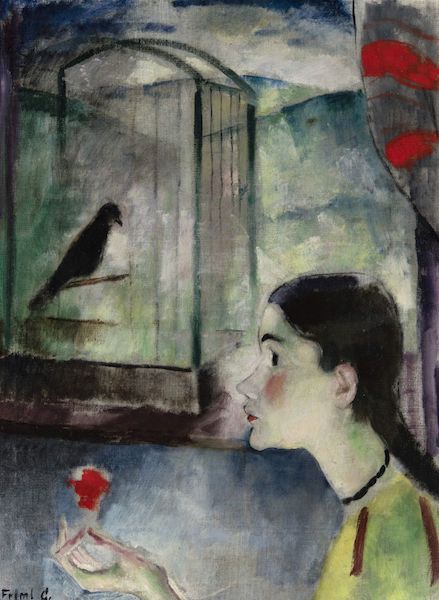Biography
His master at the College of Fine Arts was Ágoston Benkhardt, who implanted the spiritual heritage of Nagybánya in his students. From 1925 until his death, he regularly exhibited his work, apart from the period from 1930-38, when he taught drawing at the Kölcsey Gymnasium. His voluntary exile from public art life was resolved by a long period in Tihany and a scholarship to Rome in 1937. Earlier, at the end of the 1920s, he had been on study trips to several large Western European cities, Vienna, London and Paris. During the summers between 1945 and 1947, he worked mainly in the art colonies of Miskolc, Tihany and Szentendre. He was a member of the New Artists' Association (UME), the Hungarian Artists' Association (Magy. He was a member of the Union of Young Artists (UME), the Miskolc Painters' Association (Miskolc) and the Szentendre Painters' Association (Szentendre). He taught at the Drawing Department of the University of Art and Design from 1938-46, and from 1946 until his death he was one of the leading teachers at the College of Fine Arts.
His early paintings bear the hallmarks of plain-air painting in the Great Mines. This tradition, later reassessed as a requirement to start from the reality seen, has always remained his own. Few of his early works survive. During his trip to Paris, he became acquainted with the trends of European modern art, such as Cubism and especially the works of Braque, who had a lasting influence on him, but Géza Fónyi always drew his themes from the view, from the reality he saw, and these themes were given a constructive, purely structured solution in his paintings. The primacy of composition, structure and form dominates his works, which deal with simple, everyday themes. The themes of his pictures were already established before the forties and have changed little over the years. Hillsides, fields, boats moored on the water's edge are given monumental, simplified, large forms in his pictures. Simple everyday objects, jugs, a musical instrument, an aquarium, fruit are arranged in delicate harmony in his still lifes, while faces hardened by work and care are given a symmetrical expression in his figurative depictions. A theme sometimes takes decades to progress from its first stage to its later, more refined formulation. His art is related to the constructive direction of Szentendre painting. He was a member of the Szentendre Painters' Society, where he worked during the summer.
He is best known for his mosaic works. During his studies in Italy he became acquainted with the Ravenna mosaic technique, which he later applied to his works. Even before the war, he was interested in the possibility of collaboration between architecture and the other arts, and he worked on its realisation in both his theoretical writings and his practice. In Hungary, he introduced the metlachi mosaic as a new raw material and a new technical technique in mosaic art. He first laid out the mirror image of the work on a sheet of paper, thus making it possible to press the whole work into the cement base at once. In his art he always avoided any ambiguity of genre, proclaiming that a mosaic is not a picture, not a ceramic, not a painting, but a covering and that it therefore requires a different process, a different colouring and a different way of representation.

